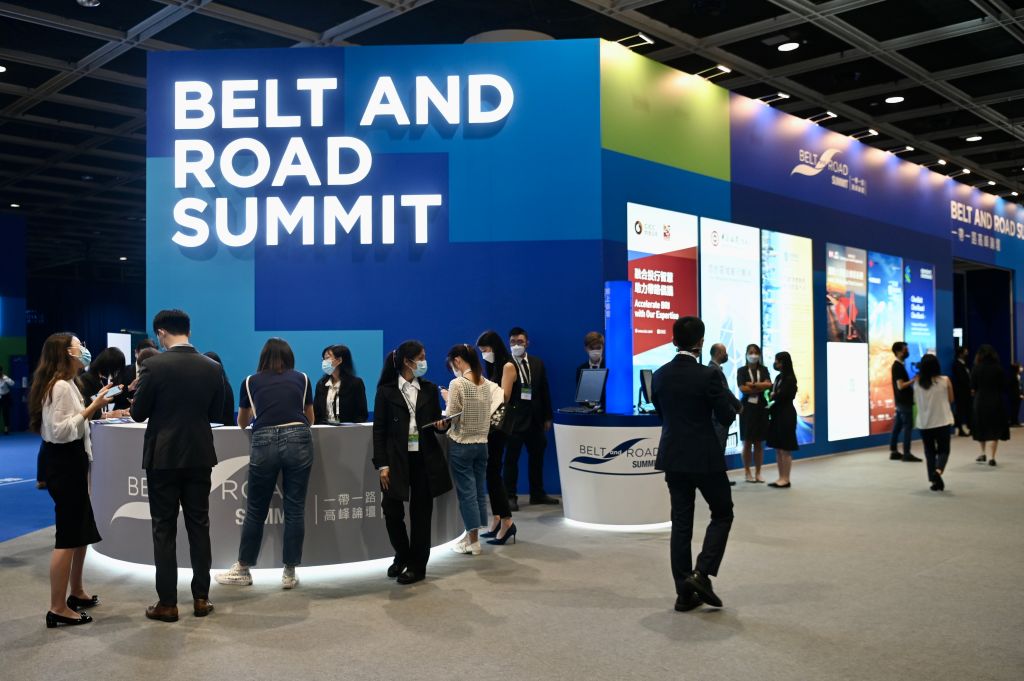
The U.S. and International Monetary Funding have for decades been the globe’s lenders of last resort, stepping in to provide emergency loans to countries in financial distress. But a new study published Tuesday shows how China has emerged as a new global heavyweight.
China provided 128 rescue loans in 22 countries from 2008 to 2021, according to researchers from the U.S.-based research lab AidData, the World Bank, Harvard Kennedy School, and the Kiel Institute for the World Economy. The loans were provided after countries struggled to repay their debts from the Belt and Road Initiative, an infrastructure mega-project that Chinese leader Xi Jinping once called the “project of the century.”
The study documents how China provided a whopping $240 billion, with loans to countries in debt distress soaring from less than 5% of its overseas lending portfolio in 2010 to 60% in 2022.
Below, what to know about China’s growing role as a global lender and the Belt and Road Initiative.
More from TIME
What did AidData’s study find?
China’s loans mainly targeted middle-income countries due to the risk they posed to Chinese banks, the study said. Eighty percent of the loans were made from 2016 to 2021 to countries like Argentina, Mongolia, and Pakistan. Argentina received the largest loans with $111.8 billion, followed by Pakistan with $48.5 billion, and Egypt with $15.6 billion.
On the other hand, low-income countries were offered grace periods and maturity extensions, with China negotiating debt restructurings with countries including Zambia, Ghana, and Sri Lanka. Previously, China has also called on the World Bank and IMF to offer debt relief, facing criticism for holding up the process.
“Beijing is ultimately trying to rescue its own banks. That’s why it has gotten into the risky business of international bailout lending,” said Carmen Reinhart, one of the study’s authors. China typically offers rescue loans with an average interest rate of 5%, more than double the rate typically provided by the IMF, the study said.
While China’s loans, which amounted to $40.5 billion in 2021, are still smaller than those provided by the IMF, which lent $68.6 billion in the same year, the study’s authors say China’s rise as a lender presents critical challenges to the global economy.
“Our findings have implications for the global financial and monetary system, which we see becoming more multipolar, less institutionalized, and less transparent,” the study’s co-author, Christoph Trebesch, said in a statement.
“Beijing has created a new global system for cross-border rescue lending, but it has done so in an opaque and uncoordinated way,” added Brad Parks, the executive director of AidData.
What is the Belt and Road Initiative?
China’s Belt and Road Initiative is a major infrastructure project that was first announced in 2013 under Xi. For over a decade, it has poured billions of dollars into projects across the globe spanning sectors like ports, highways, railways, power, and telecoms infrastructure.
Read More: China’s New Silk Road Is a Challenge for Washington
The initiative has been seen as part of China’s rise as a global power, with 139 countries signing up to the initiative that account for 40% of global GDP. But some critics see it as a “Trojan horse for China-led regional development and military expansion,” according to a briefing published by the Council on Foreign Relations. Since it began, China’s cumulative projects are worth $932 billion, including $561 billion in construction contracts and $371 billion in investments, according to a report published by Fudan University in Shanghai.
The project has faced funding shortfalls, allegations of labor and human rights violations, corruption scandals, environmental harm, and political pushback from Western countries. One explosive corruption scandal in 2019 saw senior Chinese officials offering to help former Malaysian Prime Minister Najib Razak escape from a financial scandal in exchange for railway and pipeline project contracts. Similar scandals were uncovered in countries like Uzbekistan, Kazakhstan, and Turkmenistan, where debts to Beijing continued to grow.
How is China responding to the criticism?
At a news conference on Tuesday, Mao Ning, a spokesperson for the Chinese foreign ministry, refuted the claims that China’s international lending was creating a debt trap for distressed nations. “China acts in accordance with market laws and international rules, respects the will of relevant countries, has never forced any party to borrow money, has never forced any country to pay, will not attach any political conditions to loan agreements, and does not seek any political self-interest,” he said.
He hit back at the criticism by adding that China’s overseas investments operated on “the principle of openness and transparency.”
More Must-Reads from TIME
- Cybersecurity Experts Are Sounding the Alarm on DOGE
- Meet the 2025 Women of the Year
- The Harsh Truth About Disability Inclusion
- Why Do More Young Adults Have Cancer?
- Colman Domingo Leads With Radical Love
- How to Get Better at Doing Things Alone
- Michelle Zauner Stares Down the Darkness
Write to Astha Rajvanshi at astha.rajvanshi@time.com